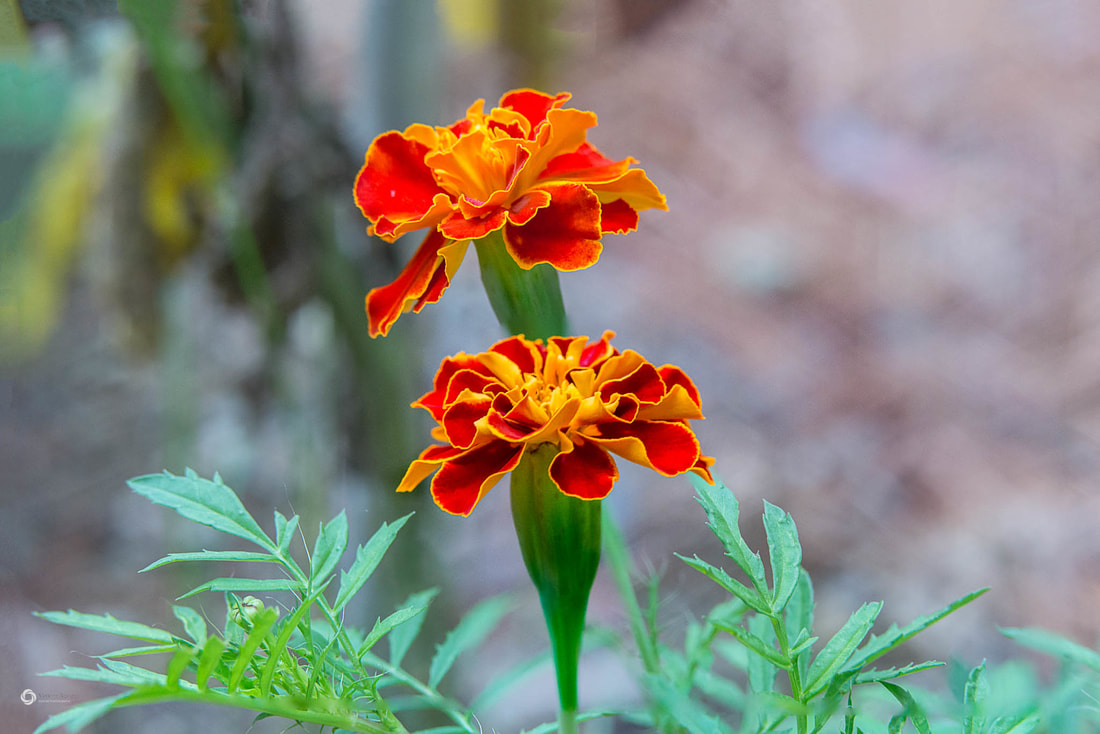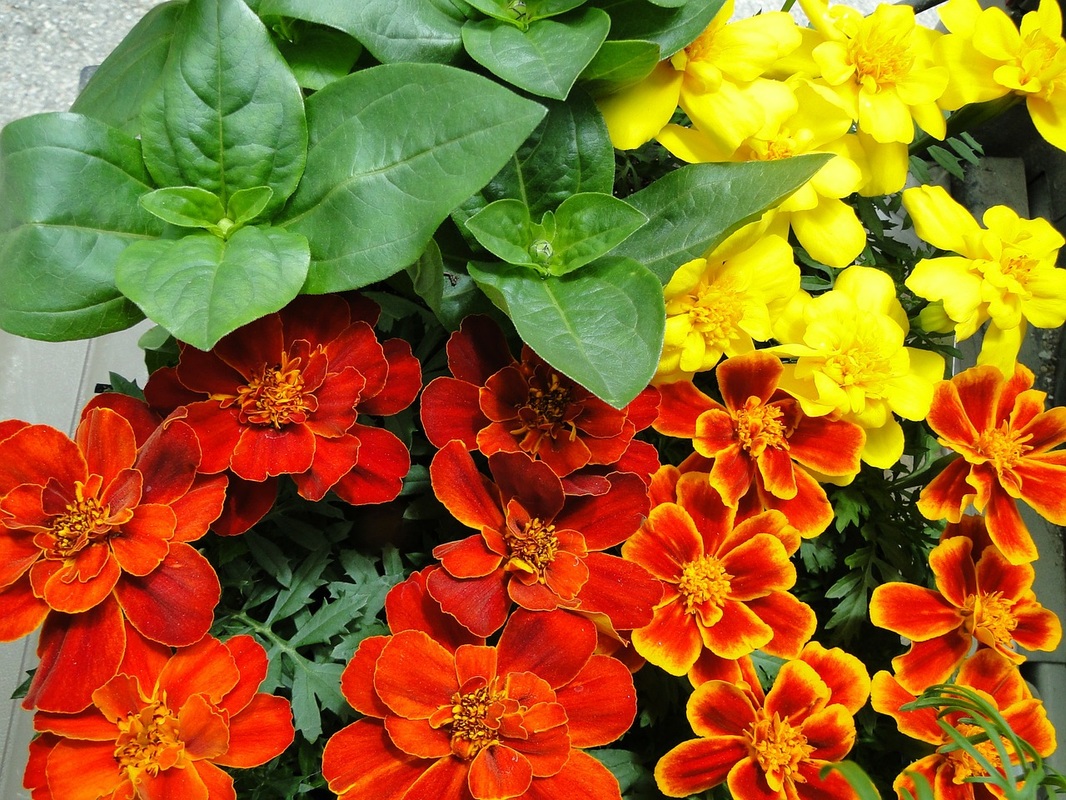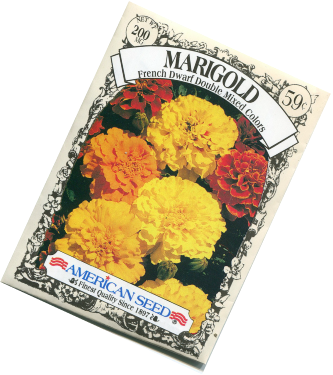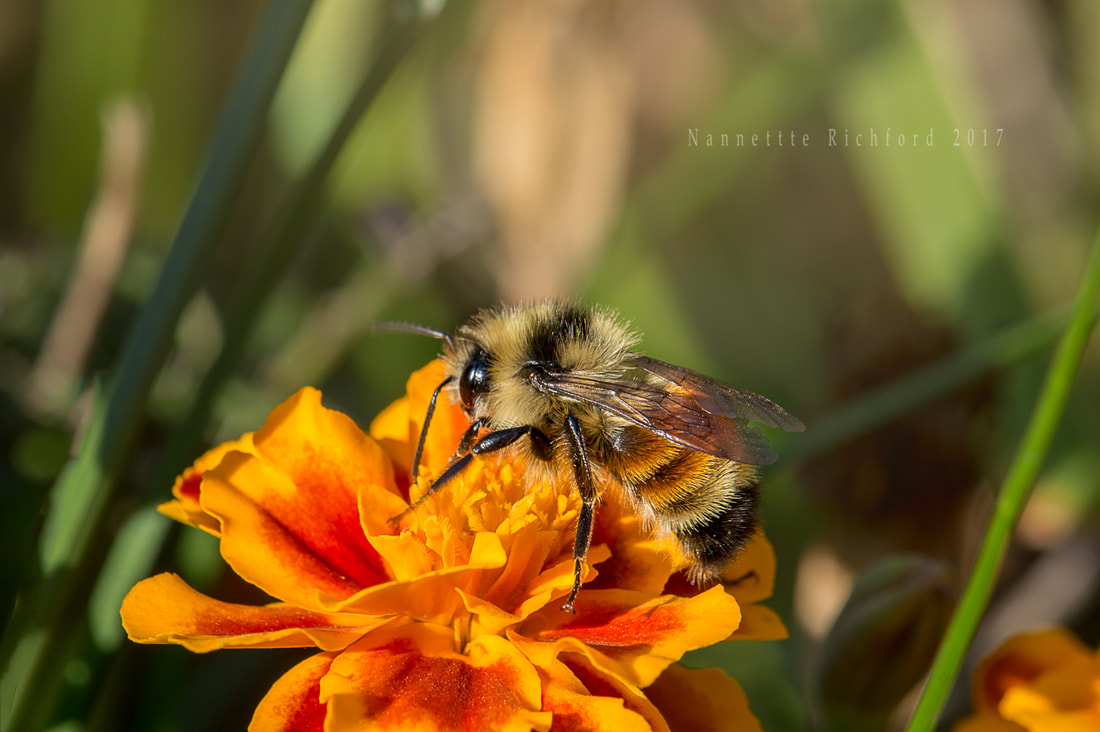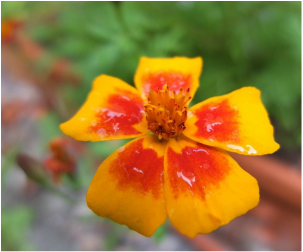How to Grow and Care for Marigolds
The Legend of the Marigold
According to legend, the marigold earned its name from early Christians who planted this bright flower around a statue of Mary as a substitute for an offering of coins. They are also said to represent the golden rays of glory often depicted around Mary's head. The marigold is often used in festivals honoring the Virgin Mary.
Marigolds bloom profusely from early summer until frost, creating mounds of color in shades of yellow, orange and fiery reds. Marigolds range in size from tiny dwarf varieties that form dense mounds of 6- to 8-inches in height to gigantic 3- to 4-foot varieties.
Dwarf marigolds make excellent bedding plants and can be used for borders or added to mixed plantings in containers. Plant tall varieties at the backs of beds or along fences for a showy display of color. Marigold blooms range from single petals that resemble a cosmos to double blooms like the ones above.
Many gardeners grow marigolds with tomatoes to repel harmful insects. Although research doesn't support the practice other than for repelling nematodes (microscopic insects in the soil that harm the roots of tomato plants) many home gardeners attest to the effectiveness of marigolds in keeping insects at bay.
The scent of marigolds may mask the scent of garden plants and confuse insect pests. Try planting marigolds around the perimeter of the vegetable garden to keep insects away.
Dwarf marigolds make excellent bedding plants and can be used for borders or added to mixed plantings in containers. Plant tall varieties at the backs of beds or along fences for a showy display of color. Marigold blooms range from single petals that resemble a cosmos to double blooms like the ones above.
Many gardeners grow marigolds with tomatoes to repel harmful insects. Although research doesn't support the practice other than for repelling nematodes (microscopic insects in the soil that harm the roots of tomato plants) many home gardeners attest to the effectiveness of marigolds in keeping insects at bay.
The scent of marigolds may mask the scent of garden plants and confuse insect pests. Try planting marigolds around the perimeter of the vegetable garden to keep insects away.
Buying Marigold SeedlingsMarigold seedlings can be purchased in flats at your local nursery in late spring for a few dollars. When purchasing flats of marigolds, check the plant identification marker closely for predicted size, bloom type, and color. Many are labeled as mixed and produce an assortment of yellow, orange and variegated blooms.
Look for healthy, green foliage with short, sturdy stems. Tall spindly plants are a sign of inadequate light. Soil should be moist and dark brown to black. Tinges of green or gray on the soil indicate excessive moisture. |
Starting Marigolds from Seed
Marigolds germinate quickly and grow rapidly. They can be direct seeded in the garden, but they will bloom later than seedlings from the nursery. If you decide to start marigolds from seed, try planting them inside 8 to 10 weeks before the last expected frost in your area.
|
Planting Marigold Seedlings
|
Marigold Care
|
Watering: Water your marigolds deeply once or twice a week to saturate the soil to the root level. Container plants require more frequent watering; some may require daily watering depending on the size of the container, their rate of growth, and the weather conditions.
Fertilizing: Fertilize marigolds with water-soluble fertilizer designed for flowering plants once or twice a month from spring until fall. Deadheading: Deadhead spent blooms to encourage the plant to produce more flowers. Removing the old flowers tricks the plant into thinking it has not produced enough blooms to set seed and reproduce. With regular deadheading marigolds continue to bloom until frost. |
